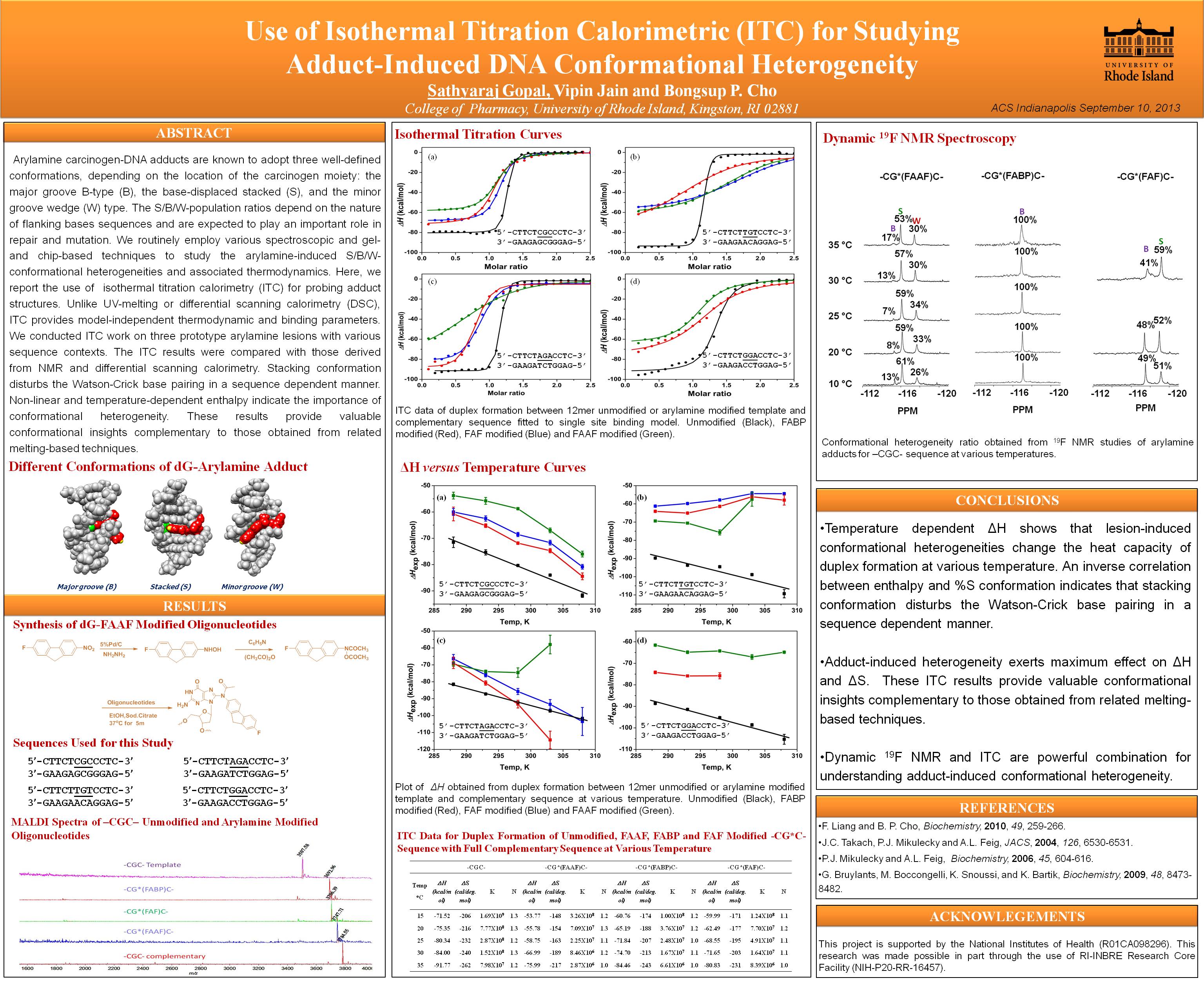- Presented at the 246th ACS National Meeting, September 2013
- Sathyaraj Gopal, Vipin Jain and Bongsup P. Cho
Research
Arylamine carcinogen-DNA adducts are known to adopt three well-defined conformations, depending on the location of the carcinogen moiety: the major groove B-type (B), the base-displaced stacked (S), and the minor groove wedge (W) type. The S/B/W-population ratios depend on the nature of flanking bases sequences and are expected to play an important role in repair and mutation. We routinely employ various spectroscopic and gel- and chip-based techniques to study the arylamine-induced S/B/W-conformational heterogeneities and associated thermodynamics. Here, we report the use of isothermal titration calorimetry (ITC) for probing adduct structures. Unlike UV-melting or differential scanning calorimetry (DSC), ITC provides model-independent thermodynamic and binding parameters. We conducted ITC work on three prototype arylamine lesions with various sequence contexts. The ITC results were compared with those derived from NMR and differential scanning calorimetry. Stacking conformation disturbs the Watson-Crick base pairing in a sequence dependent manner. Non-linear and temperature-dependent enthalpy indicate the importance of conformational heterogeneity. These results provide valuable conformational insights complementary to those obtained from related melting-based techniques.
Related People: Bongsup Cho
College of Pharmacy, University of Rhode Island, Kingston, RI 02881

